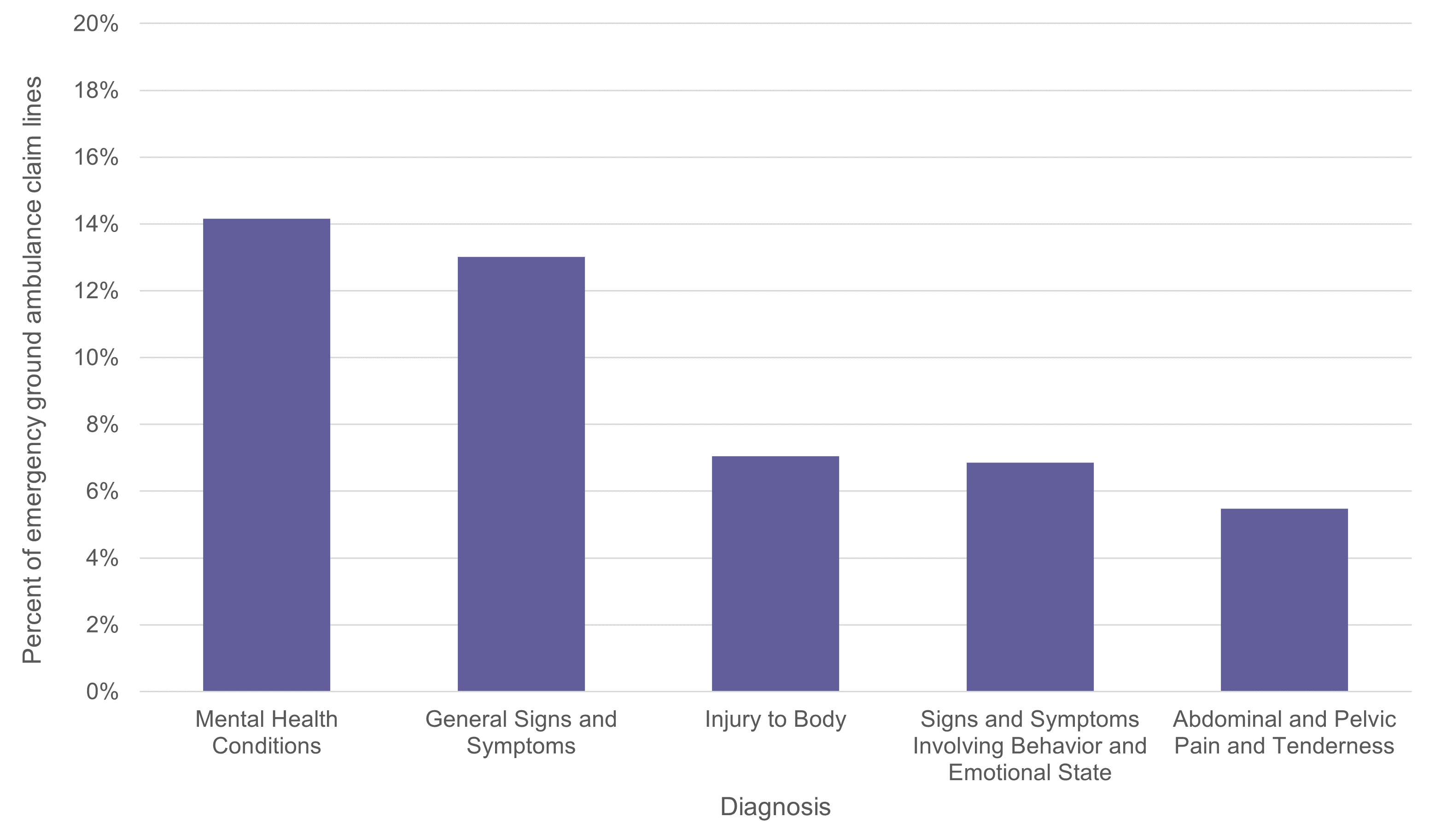Article
Contributor: New FAIR Health Study Spotlights Ground Ambulance Utilization and Costs
Author(s):
A new white paper from FAIR Health highlights the increase in costs for advanced life support and basic life support emergency ground ambulance transport between 2017 and 2020.
The average allowed (in-network) amount for advanced life support (ALS) emergency ground ambulance transport (not including mileage fees) rose 56% over 3 years, from $486 in 2017 to $758 in 2020 (FIGURE 1). This was part of a general rise in costs for both ALS and basic life support (BLS) emergency ground ambulance transport during this period, including increases in average billed charges and average allowed amounts for privately insured patients.
These are among the findings in FAIR Health’s new white paper, Ground Ambulance Services in the United States: A Study of Private Healthcare Claims.
FIGURE 1. Average Charge Amounts, Allowed Amounts and CMS (Medicare Reimbursement) Amounts for ALS and BLS Emergency Ground Ambulance Services, Without Mileage Fees, 2017-2020
Credit: FAIR Health

Charges for ALS emergency ground ambulance services increased from an average of $1042 in 2017 to $1277 in 2020—a 22.6% increase. The average charge for BLS emergency ground ambulance services increased 17.5% from $800 in 2017 to $940 in 2020. The average allowed amount for the same services rose 39.9% from $373 to $522 during the same period.
Among the other findings in the report:
Among patients aged 19-35, mental health conditions were the most common diagnosis associated with emergency ground ambulance in the period 2016-2020 (FIGURE 2).
FIGURE 2. Five Most Common Diagnoses Associated with Emergency Ground Ambulance Claim Lines in the Age Group 19 to 35, 2016-2020
Credit: FAIR Health

Throughout the period 2016-2020, ALS services accounted for a larger percentage of emergency ground ambulance claim lines than BLS services. For example, in 2020, 51.5% of emergency ground ambulance claim lines were associated with ALS compared to 48.5% associated with BLS.
Individuals 65 years and older were consistently the largest age group associated with emergency ground ambulance services, though their share of the distribution decreased from 37.7% in 2016 to 34% in 2020.
In the period 2016-2020, females accounted for a larger share of emergency ground ambulance claim lines than males in all but 2 age groups; males had more claim lines in the 0-18 and 51-64 age groups.
In the period 2016-2020, the top 3 reasons patients overall were transported via emergency ground ambulance were (from most to least common) general signs and symptoms, general signs and symptoms involving circulatory and respiratory system, and signs and symptoms involving cognition.
In 2020, COVID-19 entered the rankings of diagnoses associated with ALS emergency ground ambulance transport at fifteenth place, and entered the rankings for BLS emergency ground ambulance transport at tenth place.
In both 2019 and 2020, the 5 states with the highest emergency ground ambulance use as a percentage of all medical claim lines in that state were all in the Northeast and South, and the 5 states with the lowest use were in the Midwest and West. According to previously published FAIR Health air ambulance data, this was the opposite of the geographic distribution of fixed-wing air ambulance usage in 2019 and 2020, in which the 5 states with the highest use were in the Midwest and West and the 5 states with the lowest use were in the Northeast and South.
The 5 states with the highest average mileage for emergency ground ambulance transport in 2020 were Arkansas (27.9 miles), North Dakota (27 miles), Wyoming (24.5 miles), West Virginia (21.6 miles), and Maine (20.9 miles).
The 5 states with the lowest average mileage for emergency ground ambulance transport in 2020 were New York (6.9 miles), Alaska (7.5 miles), New Jersey (8.6 miles), Rhode Island (8.9 miles), and Florida (8.9 miles).
In the period 2016-2020, males had a higher percentage of inpatient admissions after emergency ground ambulance transport than females in all age groups except the youngest—0 to 18 years. In that age group, 35.4% of females were admitted to the hospital compared to 32.3% of males.
Ground ambulance services have been the subject of substantial policy interest. We hope that this study of ground ambulance transport proves useful to policy makers, researchers, payors, providers and consumers seeking to better understand this component of the healthcare system.
This report is a companion to a white paper previously issued by FAIR Health on air ambulance services.
For the new white paper, click here.





